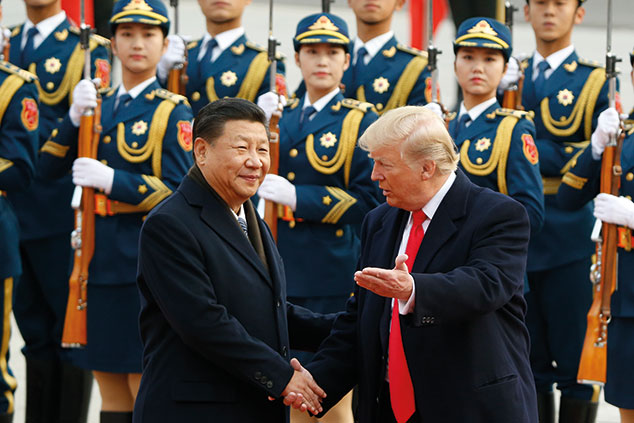
There is no better place in the UK to interview a global strategist (particularly one of a contrarian bent) than Edinburgh’s Library of Mistakes (LOM) – two small rooms in the Georgian New Town jammed with books and papers on the many, many financial disasters of the past. Russell Napier is also the keeper of the LOM – making it even more perfect. We start with China and the US – the link between their currencies is “the cornerstone of the global monetary system”. Give me “any asset price in the world for the last 25 years, and I can relate it to the link between China and America”, says Napier. Change the nature of that link, and you change the way the world works.
So how exactly does it work now? China has effectively been managing its currency (the renminbi – RMB) against the US dollar since 1994. That’s worked out well in some ways, but now that growth has slowed, the RMB may be overvalued, stymying all government efforts to stimulate the economy since last April. If an eventual trade deal with the US involves keeping the RMB at current levels (as rumours suggest), the Chinese economy will get worse, not better. Yet only a couple of years ago, I say, everyone was worrying about the RMB being massively undervalued (which made China’s exports too cheap). What changed?
Look at the current account and you can see, says Russell. China used to have a huge surplus (it exported more than it imported). It still has a fairly significant one with the US, but elsewhere “in aggregate, it is really very small”. That suggests the RMB is fairly valued or overvalued, but also that if China tries to hold it up artificially and also to buy more from the US (as President Donald Trump is demanding) it will end up in current-account deficit. That could leave China in a “bit of a pickle”. Why would China agree to this? Perhaps it won’t. But “some sort of deal is probably being cooked up” and it will almost inevitably be one that suggests lower growth for China from here.
What a slowdown in China means for the world
That means lower commodity prices (particularly bad for emerging markets); “credit events” in China (high levels of debt require high levels of growth if they are to be repaid); and a return to the world that all central bankers fear most – one “tipping back over to deflation”. This becomes a genuine risk if (when?) the China/US monetary link breaks. At that point, China won’t be able simply to devalue to another fixed rate, as in 1994. Then, its economy made up just 5% of global GDP. Today, at 19%, it “would be completely politically unacceptable. It would be banned from every goods market in the world”. Instead, China would have to adopt a fully flexible exchange rate. The RMB would fall “precipitously”, which would be deflationary for the rest of us. Then what? Every deflationary threat for the last few decades has been met with low interest rates and/or quantitative easing. But what if central bankers can’t solve the deflation that results from a huge Chinese devaluation? And what if the China/US spat is more than a spat? Take US vice-president Mike Pence: he is on record as lambasting China on everything from human rights to religious persecution, interference in American politics and trade. This could end up as a cold war.
Subscribers can read it in the digital edition or app